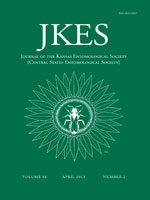Measuring shifting patterns of occurrence and abundance among members of pollinator guilds is critical for studies of their ecology, conservation and contribution to host pollination. The constitution of floral bee guilds is not readily interpreted from passive sampling of bee communities (e.g., pan or Malaise traps). Net collecting at flowers positively associates bee and flowering species, but do sampling biases of individual net collectors obscure real spatiotemporal dynamics in floral guilds of bees, or generate spurious differences where no changes have occurred? The diverse guild of bees foraging at 1-ha plots of creosote bush (Larrea tridentata) was systematically net sampled by practiced collectors along randomized belt transects across the Chihuahuan, Sonoran and Mojave deserts. These guild samples were compared by Horn's Index of Similarity, evaluating the magnitude of collector biases contrasted with geographical and temporal variability in guild composition. Simultaneous samples taken by several collectors were always more similar than those by the same collector in sequential years at a site (0.86 vs. 0.54) or concurrently at neighboring sites (0.84 vs. 0.61). Pooling collectors' site samples did not alter spatiotemporal estimates of guild similarity. Repeated seasonal samples by three collectors at one site were very similar for any given day (0.90) with the more experienced pair being particularly consistent and similar (0.96 ± 0.01). Seasonal changes of the guild were readily detected and quantified. Thus, aerial net sampling provided reliable estimates of temporal and spatial dynamics of the Larrea bee guilds once the sampling protocol had been practiced. We recommend systematic aerial net collecting of pollinators at counted floral host plants to quickly and reliably characterize pollinator guilds quantitatively. Systematic net sampling of bees taken at a sequence of randomly chosen individuals of a given flowering species offers a reliable and replicable means of efficiently quantifying variability and change in such floral guilds of bees. The method should find application for conservation, agriculture and habitat management involving bees and other insect pollinators.
How to translate text using browser tools
1 April 2013
Sensitivity of Systematic Net Sampling for Detecting Shifting Patterns of Incidence and Abundance in a Floral Guild of Bees at Larrea tridentata
James H. Cane,
Linda J. Kervin,
Robert McKinley
ACCESS THE FULL ARTICLE
Apiformes
Apoidea
conservation
creosote bush
pollinator
sampling methods





